We’re thrilled to welcome our newest contributor, Summer Stone of Cake Paper Party! Join along as Summer explores traditional baking concepts in new and exciting ways.
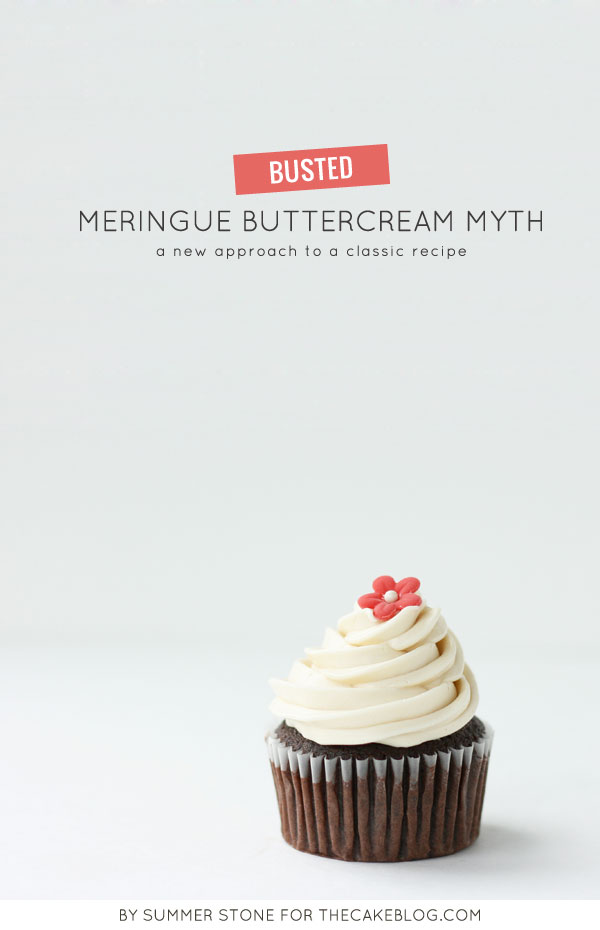
CAKE MYTH : You must create a meringue in order to produce a European-style buttercream.
For some time, I puzzled over the idea that you have to create a fully realized, stable meringue in order to make a Swiss Meringue Buttercream (SMBC). I wondered why one would create a beautifully peaked meringue and then destroy it by adding in loads of butter. I also wanted to know why SMBC’s were so inherently unstable and even the most practiced of bakers sometimes had difficulty making them behave. After much experimentation, I have found answers that will help you make buttercream faster and easier than ever before. You will find that you don’t need a meringue at all!
Here is my method for making Swiss Buttercream (SBC) and an explanation as to why it works:
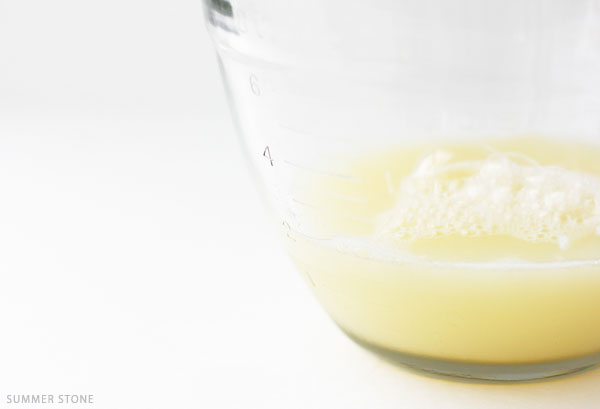
STEP 1 : Start with egg whites
Egg whites serve two important roles in SBC. They act as a structural component and serve as a liquid to dissolve granulated sugar into. In traditional SMBC, egg whites are beaten to peaks as a means of incorporating air into the buttercream. The problem with this is that protein mediated air pockets are very unstable in the presence of fat. When butter is added, much of the air which was beaten into the eggs is lost and it they become a syrupy puddle. Here I have used pasteurized egg whites from a carton, but separated egg whites from cracked eggs work just as well.
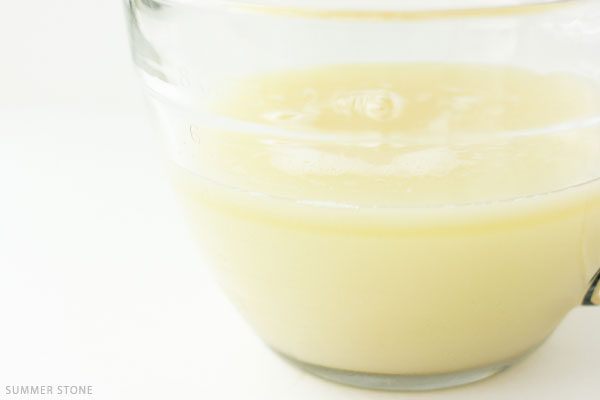
STEP 2 : Add sugar
Sugar obviously plays an important role as a flavor provider in a buttercream but it also serves to thicken and stabilize the egg liquid it is dissolved into. The sugar-egg combination, when mixed with butter, creates an emulsion that is more stable than either individual component.
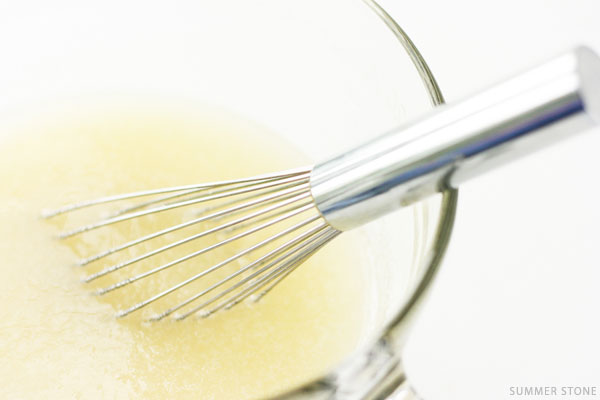
STEP 3 : Whisk the sugar and eggs together
The eggs and sugar have a symbiotic relationship. The eggs serve the sugar by providing a solvent into which it can be dissolved. At the same time, the sugar helps the egg whites by weakening their ability to coagulate allowing them to remain in a liquid state. Be sure to whisk the eggs and sugar together very well for maximum benefit. No one likes scrambled egg buttercream!
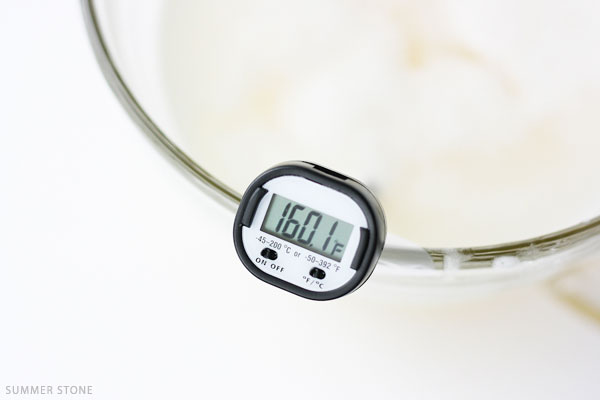
STEP 4 : Heat the eggs and sugar
While the egg whites are helpful in dissolving the sugar, at this high of a sugar concentration heat is required to fully dissolve the sugar crystals. Heat also functions to destroy any harmful bacteria that may be living in the egg whites (particularly if they are fresh). For this reason, you should heat your egg-sugar syrup to 160ᵒ F which will ensure Salmonella is killed. I find the easiest way to do this is in the microwave. One recipe will take 3-4 minutes stirring at one minute intervals. Alternatively you can heat the syrup in a double boiler until a safe temperature is reached. At 160ᵒ F all sugar crystals should be dissolved. I like to add a half ounce of corn syrup to the sugar-egg mixture to minimize the chances of recrystallization. Be sure to stir in any sugar granules than remain on the sides of the bowl. One undissolved rebel sugar crystal can reseed the whole batch.
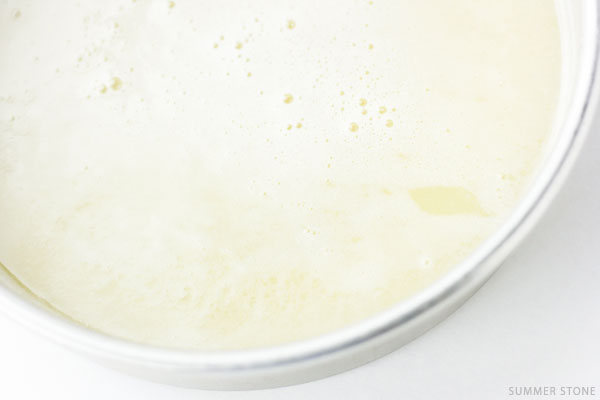
STEP 5 : Cool the egg-sugar syrup
I place my syrup in a clean cake pan and place it in the freezer for 20-30 minutes to reach a cool/cold temperature (45-60ᵒ F). When the sugar syrup is added to the butter in this temperature range, the two components generally go into emulsion seamlessly without “breaking”. This seems to be one of the problems with traditional SMBC. Since a meringue will not form readily in a cold syrup, the eggs and sugar would have to be at room temperature when the butter was added. This room-temperature blending stresses the combination and makes formation of a proper emulsion more difficult.
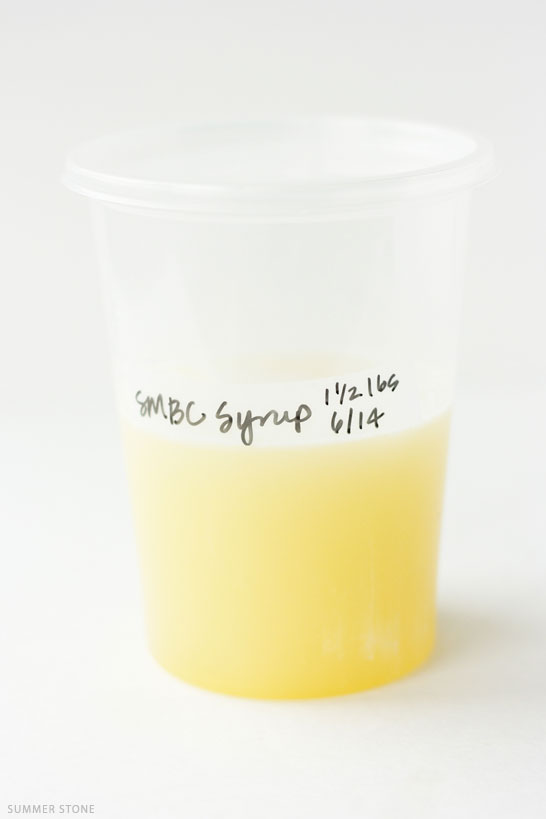
STEP 6 : Make extra syrup to save for later
One of the advantages of making SBC by this method is that you can make large batches of syrup and freeze the extra for quick and easy batches in the future. In the photos above, I made a double recipe of syrup and saved half for a future batch.
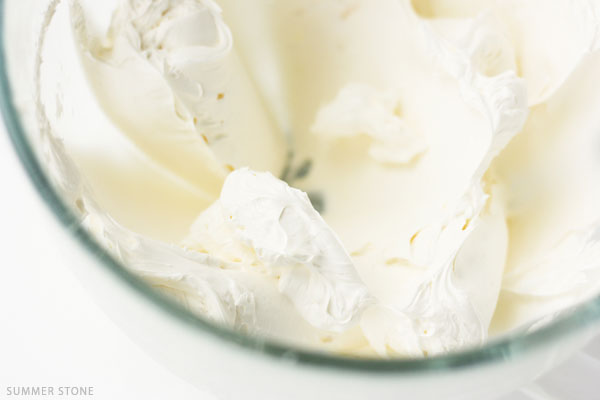
STEP 7 : Beat butter until light and fluffy
Butter is the all-star of SBC. It does the amazing emulsifying work. For this reason, it makes the most sense to start with the butter and add the cooled syrup to it. When the butter is beaten on high for 2 minutes before the syrup is added, it lightens the buttercream and takes in air in a way that is more structurally sound than that of beaten egg whites. I like to start with butter that is at a cool room temperature since it holds air better in a more solid form.
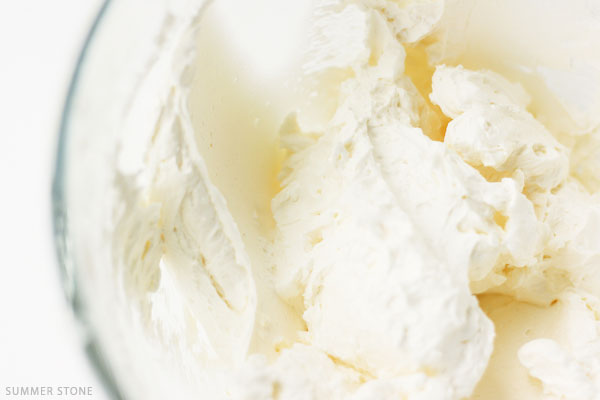
STEP 8 : Add half of the sugar syrup
Adding half of the liquid at a time allows the mechanical action of the mixer to work to develop the emulsion without overwhelming the butter and causing the mixture to break. Beat for one minute to fully incorporate the syrup before adding the final half.
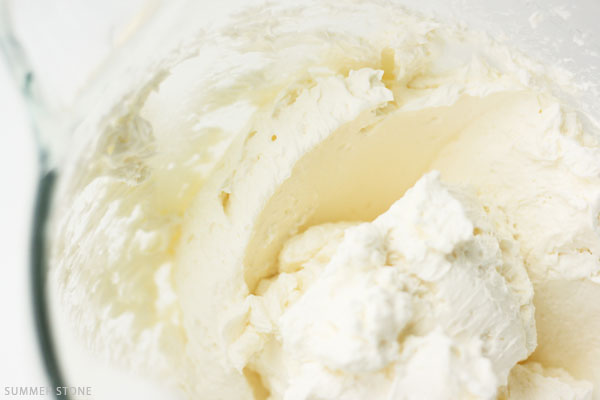
STEP 9 : Add remaining syrup
Add the second half of syrup to the butter mixture and beat on high to complete the emulsion and incorporate air into the mixture. The buttercream will be quite firm at this point.
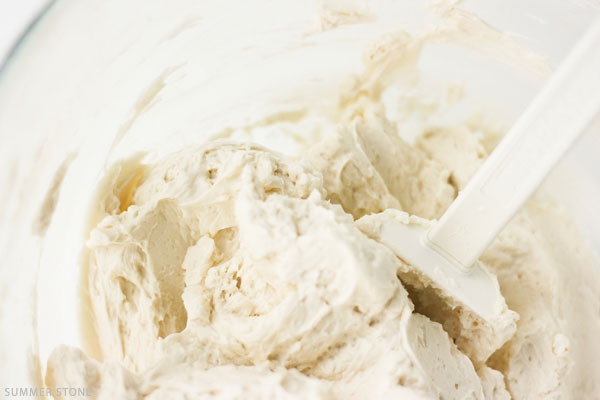
STEP 10 : Add vanilla and other flavorings
Adding liquids such as vanilla not only incorporates flavor but the liquids also smooth out and lighten the texture of the buttercream. At this point, the buttercream will be very firm and stable. If you would like a creamier buttercream that is less sweet, you can add additional butter, up to another 4 ounces. If you want a buttercream that is lighter in texture, more like whipped cream, you can add more liquid in the form of milk, sour cream, cream cheese, juice, alcohol, fruit purees or water. I have added up to a half a cup of cool water per recipe with success. Slowly drizzle in the additional liquid while the mixer is going on medium speed.
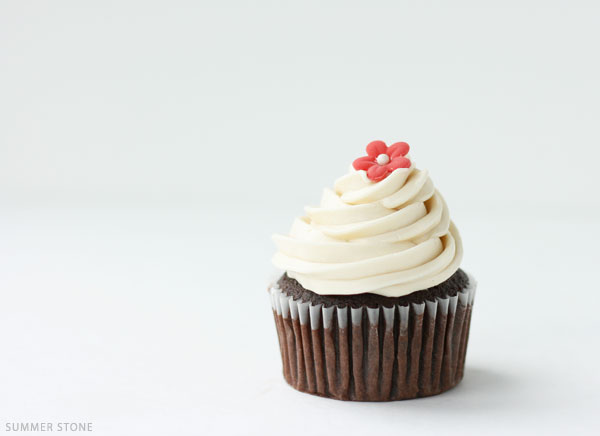
I hope you enjoy this alternate method for making a Europen-style buttercream and that you find it easier and more fool-proof than ever before! Happy baking!
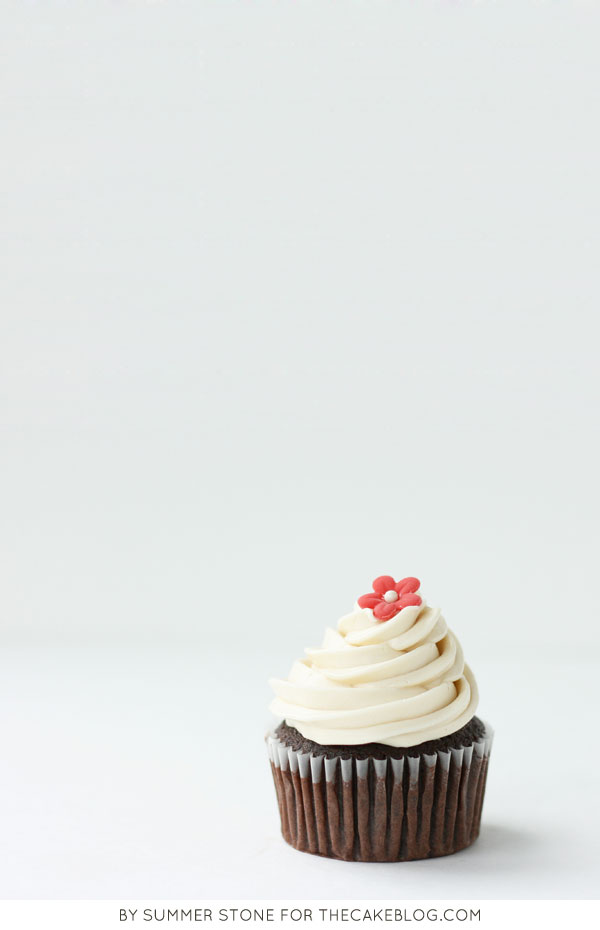
SWISS BUTTERCREAM
a recipe by Summer Stone
- 8 ounces (227 grams) egg whites separated from whole eggs or from a carton- 1 cup
- 16 ounces (454 grams) granulated sugar- 2 ¼ cups
- ½ ounce (14 grams) corn syrup- 1 tablespoon
- 16 ounces (454 grams) unsalted butter softened but not warm- 2 cups
- 2 tablespoons (30 milliliters) vanilla extract
Whisk egg whites and sugar together in a microwave-safe bowl. Make sure the mixture is well mixed so the sugar can protect the eggs from cooking. Heat the mixture in the microwave for 2-4 minutes on high in 30 second intervals whisking well after each 30 second heating. Heat until the sugar is dissolved and the mixture reaches 160ᵒ F/72ᵒ C. (Alternatively this step can be carried out in a double boiler over simmering water). Pour the syrup into a cake pan or shallow metal bowl and chill in the freezer for 20-30 minutes until it is quite cool (45-60ᵒ F).
Meanwhile, beat the butter in a mixer for 2 minutes on high until the butter is lighter in color and aerated. Add the cooled syrup in two additions to the butter beating 1 minute after each addition. Add the vanilla and beat 30 seconds until smooth. Can be used immediately.
You can store this buttercream at room temperature for 2 days, in the refrigerator tightly sealed for 2 weeks, or in the freezer for 2 months.
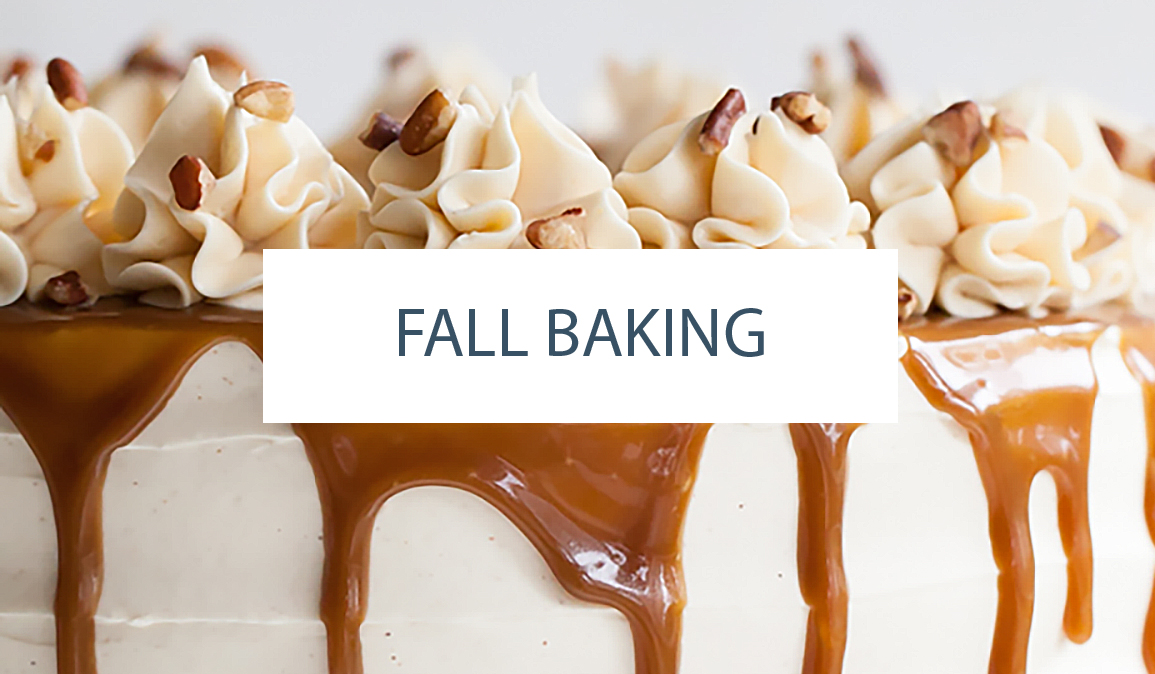

I’m curious if adding liquid like you suggest to give it a more whipped cream feel will significantly alter it’s ability to hold up the layer/s above? Can you comment on that? I can’t wait to try it but I’m wary of it squeezing out the sides and losing height.
Many thanks for the recipe. I’ll definitely be using it this weekend.
It is still very firm with the liquid added and stays stable. You can add a little at a time too and check it in between if you are worried about the texture. 🙂
Thanks Summer!
Shut the front door!! I love making SMBC, but it certainly does take a lot of whipping time. I generally make triple batches and freeze. But, oh, to only need to make the syrup (and in the microwave)… Life altering for this baker 🙂 I’m one week post surgery, but I think I’m gonna have to get in the kitchen today to try this… eeekkk… sooo excited. Thanks for sharing!!
Nothing heals (the soul at least!) like a good batch of buttercream! I wish you a speedy recovery. 🙂
I just tried this recipe. Couple of comments. I have always had success making regular SMBC but was excited to try this new version. First, it will take longer than the regular way as you must wait for the egg white mix to cool. This took an hour for me (did not put into a really shallow pan). The final product is much gloopier than I had expected, also much sweeter. I am not sure I will be able to use it in place of my regular SMBC. Probably need more practice as with anything, but just wanted to let you know of my experience.
Hi Alex, You can use this method with the proportions you are used to if you prefer it less sweet. And yes it takes a little while to cool, but at least it is all hands off. It’s great to zap the eggs and sugar the night before and stick it in the fridge to be ready in the morning. 🙂
Sadie my dog thank’S you for this recipe. She hates the sound of the standmixer. Can I use my regular SMBC recipe for this technique to work?
Yes, for sure. The proportions are very flexible with any SMBC. Tell Sadie you’re welcome. 🙂
You are an angel! Thank you very much .
I just tried this new method and it didn’t work out for me. It never gained any volume and it just looks and tastes like super sweet whipped butter. I used the carton egg white (which is what is suggested) and to this date, I still have NOT been successful in making my SMBC with it. The only thing that works for me is fresh egg whites (I just hate throwing out so many yolks).
I’m not giving up through. I’ll try again but for tonight, back to my regular SMBC.
I’m curious to see how others do with it.
Thanks!
Michele
I have used this basic method for a few years after seeing in a strawberry “Swiss meringue” buttercream recipe. But I always used everything at room temp and, once or twice, have had my icing “break.” So excited to try it with the cooling method. I shared this with my Facebook buddies and so many people were surprised by this method – thanks for sharing, this style is so delicious and now I can’t wait to make some yummy cupcakes this weekend to try with the new cooling step you taught me! I always appreciate the insights 🙂
I can’t wait to try this! Making a top notch SMBC has evaded me for a long time and this seems like a winner to me. Thanks so much for ironing out the kinks for us!
That sounds delicious! It’s My first time knowing this recipe and I would love to try it at home.. xx♥
I have tried it two times in four days 🙂 First time I added some whipping cream and orange juice and Grand Marnier (tried to make it creamier, like yours in the picture, and less sweet). I did not work, it granulated and begun to dissolve to cream and liquid.
Next try added only cream cheese (Mascarpone) and orange zest. Problem is if I put it in a fridge it cranks, and after being exposed to warmth (it is summertime) it melts to fast. So, I had only short time to use it on optimal temperature.
An it never looked like yours on the picture. What did I do wrong?
I got foam in my smbc syrup, should i remove it before combining with the butter?
OOOMMMG!!, thank u thank u so much,,,, I have been wanting to try SMBC for ages and never gave it a shot coz I wasn’t sure if it will work,,,, but once I read ur method I knew I just had to try it…. It was so easy to understand and follow and it turned out like a dream…. It was a big hit !!!!!! I live in India were its warm,,scratch that,,,,, it’s HoT and I had no trouble wit it being gloppy or unstable … It was fantastic !!!! Thank u once again !!! Much Cakey love from India.
Can I used this SMBC cover a cake in fondant?
Want to make this but I don’t have corn syrup.is there a substitute for it
Glucose would work… or maybe golden syrup.
Will it still work if I don’t have unsalted butter?
regular salted or semi-salted butter would work. refrigerated margarine too… although, depending on the brand, salted butter might make it taste a bit salty… and some margarines taste funny.
I am currently making this method and it is a time and life saver. Especially in comparison with the book method from school. In addition my client wants “whipped topping” for her wedding cake in the middle of a st.louis humid summer. Thank goodness I found this in time to make her cake. Will update once I stack it. Thanks Summer!!!
How did this work for a summer wedding cake? I’m making my own in August in Louisiana (inside of course, but the room will heat up!)
I just tried this recipe and it came out perfectly!
Thank you!
Always hated how long it took to make SMBC and now it is faster and seems to stand up well in a hot tropical climate like here in Malaysia.
Hi Summer,
How would I go about making this recipe chocolate? Can’t wait to try it. Thanks for sharing.
Hi Summer, I tried your recipe and it worked out just great. It made a nice thick SMBC. Thank’s for this recipe. Love it!
Hi SUMMER.
I want to out this butter cream bewteen layers of a three tier Wedding cake and then ganach the cake before adding the fondant. However I am concerned how long I can keep this as I usually bake and decorator then deliver the cake between 3/4 days. Any advice please. thank-you
Thank you for sharing this is really interesting!
Does this frosting hold up to heat? I’m talking 120* Las Vegas summer. I’ve been trying to figure out how best to stabilize frosting for an outdoor party. I’m wondering if gelatin is my best bet, or would this work?
hi summer stone i don’t have a stand mixer and paddle attachment so can i make this with regular hand beater / hand mixer ?does it gives the same results?plz reply
I’ve made this (or a similar recipe) by hand.
It works, but it does require a fair amount of Elmbow grease
And one more thing i have to ask that can we use shortening with the butter? As i have only half quantity of butter .if i use half of butter and half of crisco shortening Is it works the same?
I tried this and LOVED how easy it was to prepare! Turned out very stable but a tad too sweet for our Asian palette. Also it looked a little glossier than my usual SMBC but that’s no problem 🙂 THANKS Summer!